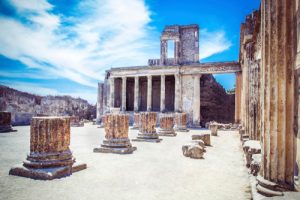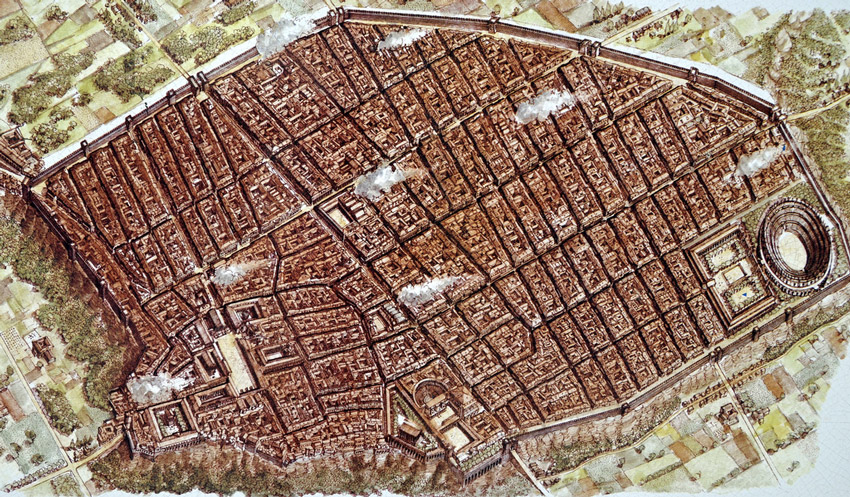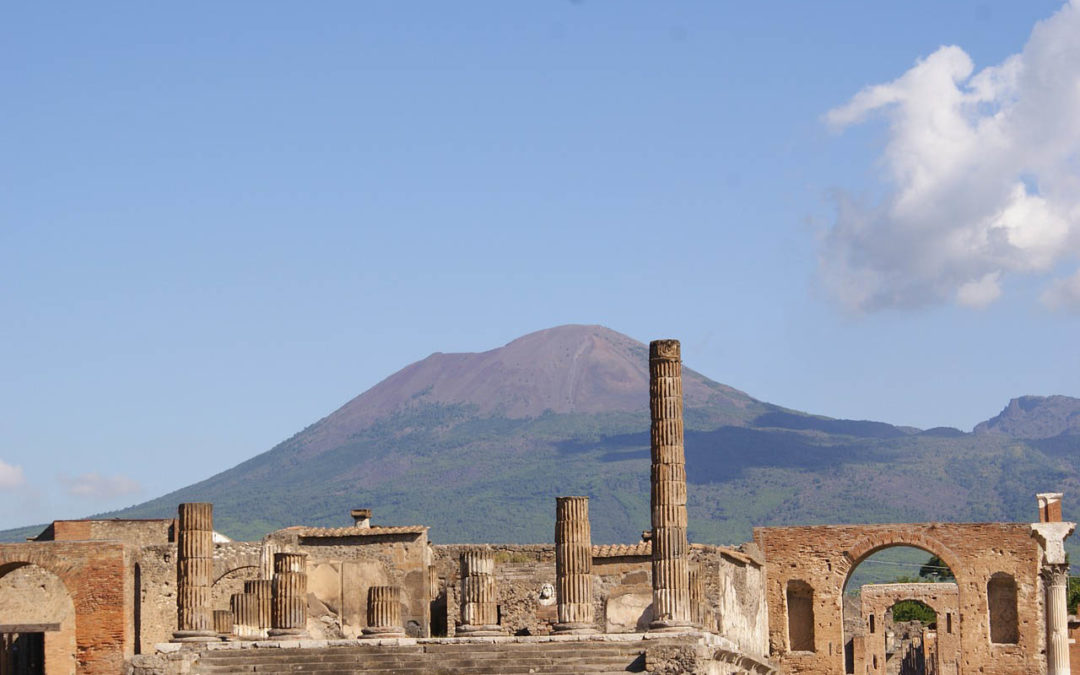Pompeii is one of the most visited archaeological site in Italy and is included in the list of the UNESCO World Heritage Site. It was destroyed during one of the eruptions of the Mount Vesuvius, in A.D. 79. The Roman city of Pompeii buried and was covered by feet of ash and rocks. The city and the people of Pompeii remained frozen in time until 1748, when a engineer discover it.
“Darkness fell, not the dark of a moonless or cloudy night, but as if the lamp had been put out in a dark room”
(Pliny The Younger, who witnessed the destruction from a boat in the bay of Naples)
You can reach Pompeii from Naples, a beautiful city in the south of Italy (on the Unesco website, you can read about the “Outstanding Universal Value” of the Historic Centre of Naples.) The trip takes half an hour and you can visit the archaeological area in half a day, at least. The whole day would be better.
People of Pompeii: Mount Vesuvius destroyed and preserved
 Pompeii is the longest continually excavated archaeological site in the world. Experts from all over the world come to admire and study this unique archaeological remains.
Pompeii is the longest continually excavated archaeological site in the world. Experts from all over the world come to admire and study this unique archaeological remains.
Beyond the amazing conservation of streets, houses, villas and historical evidence of the Roman Empire and its life, there is probably the most striking aspect: petrified people of Pompeii.
It has been always widely assumed that most of the victims died asphyxiated by volcanic ash and gas.
A more recent study says most died instantly and suddenly because of extreme heat and many shocked into a sort of immediate rigor mortis.
People were flash-heated to death, but Vesuvius destroyed and preserved everything at the same time. 1150 bodies were discovered by archaeologists and the unique set of circumstances due to the eruption of the vulcano allowed them to bring 100 of those bodies back to life in the form of casts that allow perfect replicas of the victim’s bodies.
This beautiful HD 3D video animation from youtube is made by One Animation and show what happens nearly 2000 years ago to people of Pompeii and many other places near Mount Vesuvius in Italy.
Needless to say: you must see Pompeii at least once in your life
Visiting Pompeii means going back in History. Walking through its narrow streets allow you to live the life of the Ancient Romans and imagine and observe how a Roman city would be, two thousands years ago…Here’s a list of the unmissable attractions:
- The amphitheatre – It is one of the best preserved amphitheatre. Used for battles, sports, spectacles involving wild animals and gladiators. It’s on the eastern corner of the excavated area, measures 135 x 104 metres and was built to hold about 20,000 people. Have you ever seen Pink Floyd: Live at Pompeii? Yes, they shot here.
- Gymnasium – In front of the Amphitheatre. It was used for sporting activities and diving.
- House of the Vettii – Priapus, couples making love, cupids and mythological characters adorn this house in very well conserved frescoes.
- House of the Faun – The statue of the dancing faun in the entrance is a beautiful symbol. The house is considered a perfect example of the mix of Italian and Greek styles in architecture.
- The Forum – Surrounded by many important buildings. The center of public life. Southwest of the archaeological area.
- Temple of Apollo – Here you can see the oldest remains.
- Theatre
- Lunar – A famous brothel with pornographic and erotic frescoes.
- Via dei Sepolcri
- House of the Ancient Hunt
Don’t miss Villa dei Misteri (Villa of the Mysteries) outside the city walls!
The Second Life of Pompeii
 So was defined the new phase of excavation to bring the city submerged by Vesuvius back to light. The Great Pompeii Project is the plan to secure the front of the Regio V of the Archaeological Park of Pompeii and from 2017 continues to give great surprises, many more than archaeologists expected.
So was defined the new phase of excavation to bring the city submerged by Vesuvius back to light. The Great Pompeii Project is the plan to secure the front of the Regio V of the Archaeological Park of Pompeii and from 2017 continues to give great surprises, many more than archaeologists expected.
The first wave of interesting discoveries began in November 2017 and brought to light three intact amphorae still full of materials that the inhabitants of the city used to keep.
After identification and restoration three buildings were opened to the public:
- Domus delle Botteghe
- Casa del Triclino all’aperto
- Casa del Larario Fiorito
The original colors of the Roman city can be found in the Vicolo dei Balconi, now included in a new tour, where you can see the Pompeian red, the ocher yellow and the floral motifs, the geometric decorations and the animals that adorned the streets.
In chronological order, the most recent findings include:
- Fresco of Priapus traced in a new domus along Via del Vesuvio, in finely decorated rooms where a woman’s face was also found;
- A fountain with glass tiles and shells preserved until today;
The systematic and rigorous maintenance as well as preserving the archaeological heritage have led to the discovery of new unexplored environments that have given back casts of animals, such as the horse found in Civita Giuliana and inhabitants still fleeing with the precious jewels they wore.
Last in order of discovery are the frescoes in different rooms of the same Domus, that portray Leda and the swan, and Narcissus who is gazing at his own reflection, accompanied by decorations that highlight the theme of the celebration of life and joy on the whole that reveals the luxury of those homes.
With this new spring full of discovery, the Park of Pompeii has become a popular and fascinating destination. Dive into the past and discover one of the most interesting places in the world.

An old map of Pompeii
External Resources
The official website of Pompeii Archaeological sites
UNESCO documents’ page on the Archaeological Areas of Pompeii, Herculaneum and Torre Annunziata.
Very interesting article about conservation of the bodies. – The Daily Mail.

